During and in the four days immediately following the US Sailboat show in Annapolis, Maryland, the Cruising World judges inspected and sailed on 27 boats vying for recognition. Learn more about the boats in our 2022 Boat of the Year »
From the very beginning, nearly 50 years ago, Cruising World has kept an open mind as to exactly what constitutes cruising. For some, it might mean circling the globe under sail alone. For others, lowering the mast and motoring through America’s rivers, lakes and canals to complete a Great Loop fits the bill. Some seek long bluewater passages, others are content to gunkhole along a lakeshore in a shallow-draft vessel, sleeping under the stars on a cockpit bench or tucked under a boom tent should it rain.
And likewise, since the inception of our Boat of the Year contest a quarter century ago, we’ve asked our independent team of judges to evaluate a wide range of boats and measure them against their stated design brief. It’s not every year that our experts have the opportunity to inspect a category of nifty, smooth-sailing vessels under 30 feet, but for 2022, there was a trio of modestly sized smart, cool boats to put through their paces. The only problem? Each model was designed and built with a vastly different purpose (and sailor) in mind.
The Tartan 245 was originally conceived as a training boat for sailing schools. J/Boat’s J/9 is an unabashed daysailer, meant to provide exciting spins around the harbor, even under mainsail alone. And, the Beneteau First 27 is fine-tuned to deliver performance, and definitely lives at the racier end of the spectrum.
The judge’s task? Decide which nominee came closest to fulfilling its stated purpose.
Let’s begin with the J/9. It’s simple. It’s fun. It’s a totally enjoyable, stress-free sailing experience that can be easily handled by any sailor looking to enjoy a breezy afternoon. And that’s just what the crew at J/Boats was striving for with their new 28-foot daysailer.
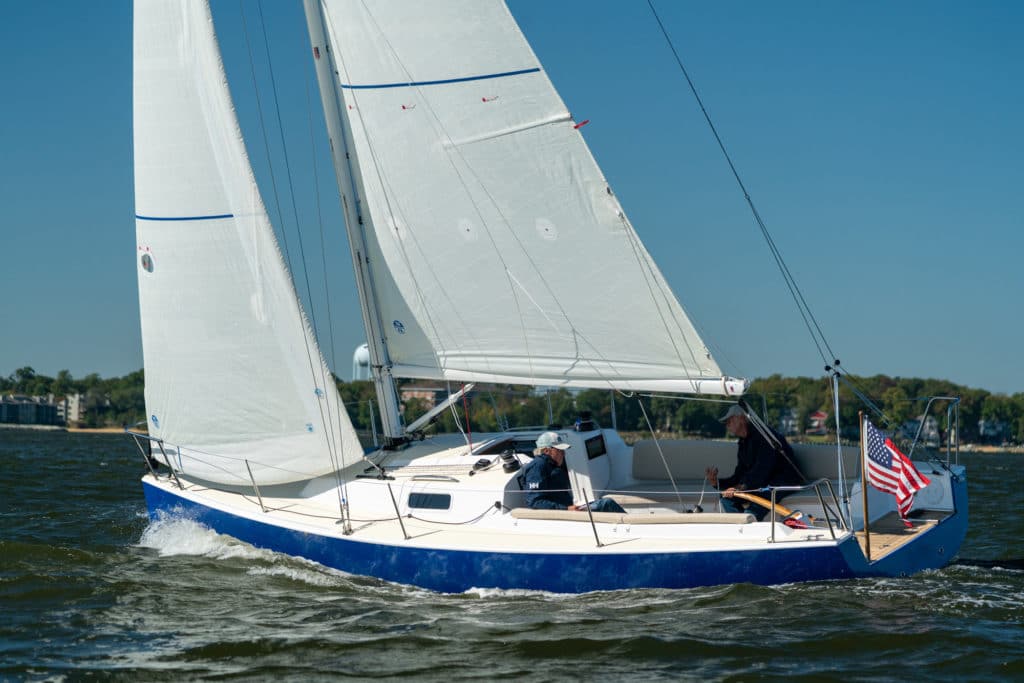
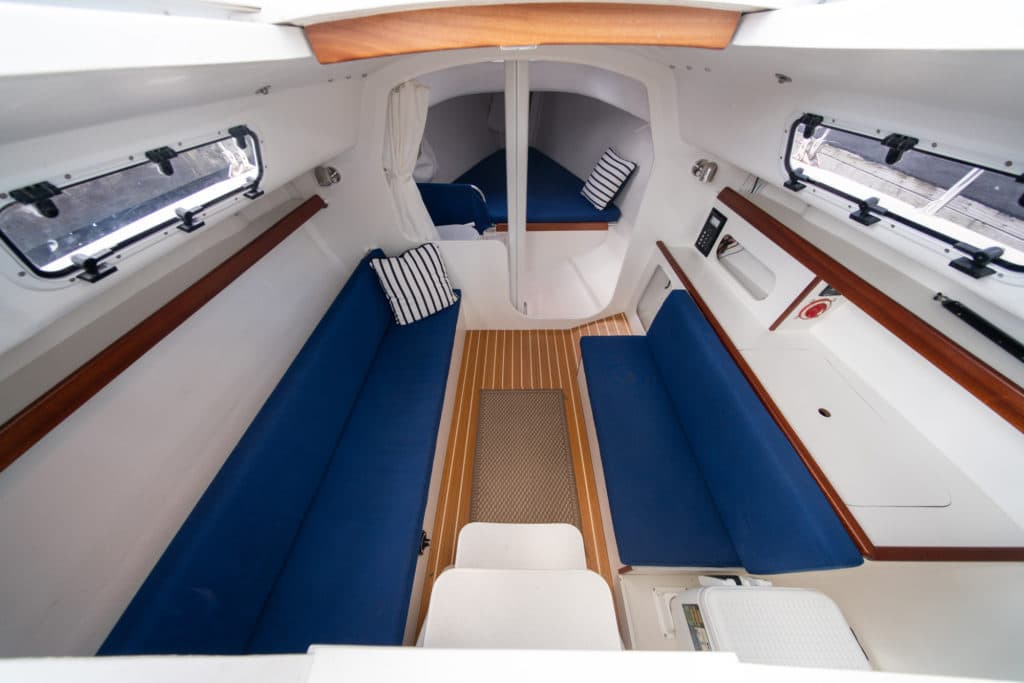
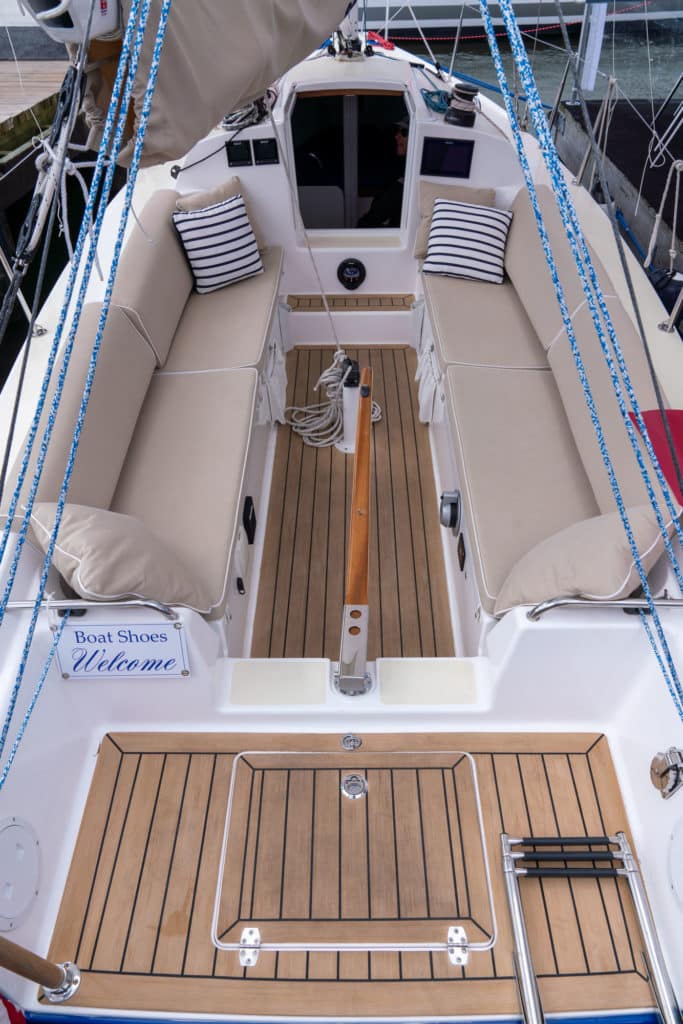
In promotional materials, the company asks, “Is this the most comfortable cockpit ever?” And the answer, after sailing the boat on a blue-sky Annapolis day, would have to be yes. There is plenty of room for a couple of couples to sit comfortably. But the tiller and its extension also allow a singlehander to sit forward and easily reach the jib sheets, led to winches on the low-profile cabin top. Aft, there is even a small swim platform and ladder for when the time comes to douse sails and enjoy a dip on a hot afternoon.
Described from the get-go as a “daysailor,” a small cabin has room for an open V-berth, a couple of settees, a head, and space for a small portable cookstove and cooler.
Underway in 10 knots or so of breeze, the boat was quite well mannered, even with the jib furled. Judge Tim Murphy notes, “The design writ started off with it being a mainsail-only boat, and then it ended up having a headsail too. But it’s really mainsail-driven. And the big drawing point is the huge cockpit. We sailed the boat under main alone, and sure enough, you could go out for an afternoon with just the main and have a time for yourself. The cockpit is perfect. It really is the strongest part of the boat.”
With the Tartan 245, longtime Tartan naval architect Tim Jackett, who’s now practically synonymous with the brand, was originally asked to design an easily handled, simply laid-out 24-footer that would be ideal for sailing lessons.
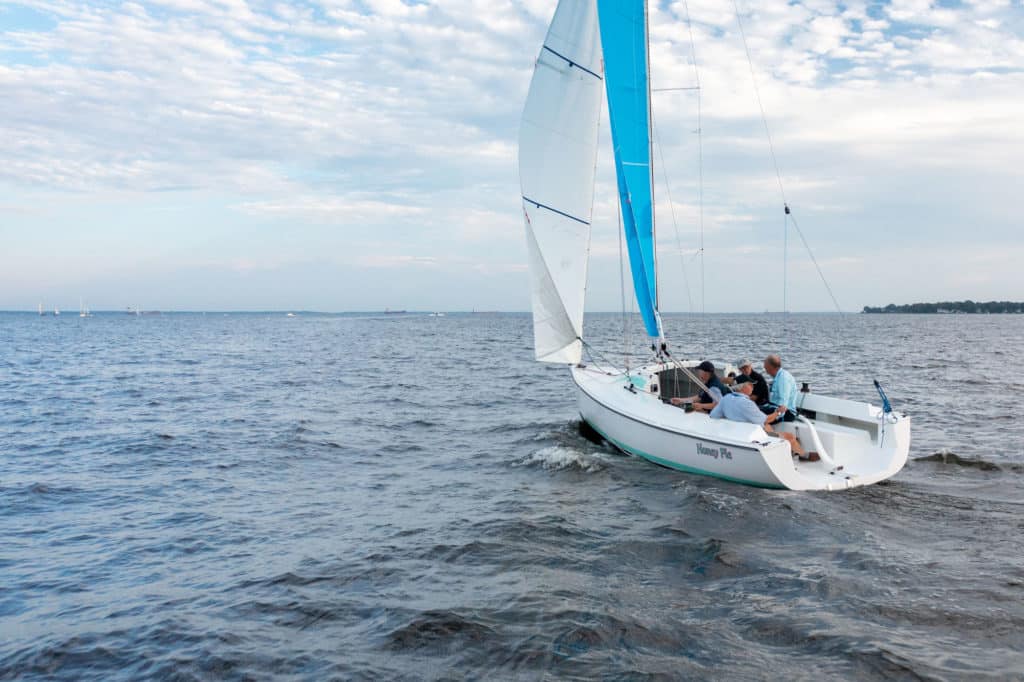
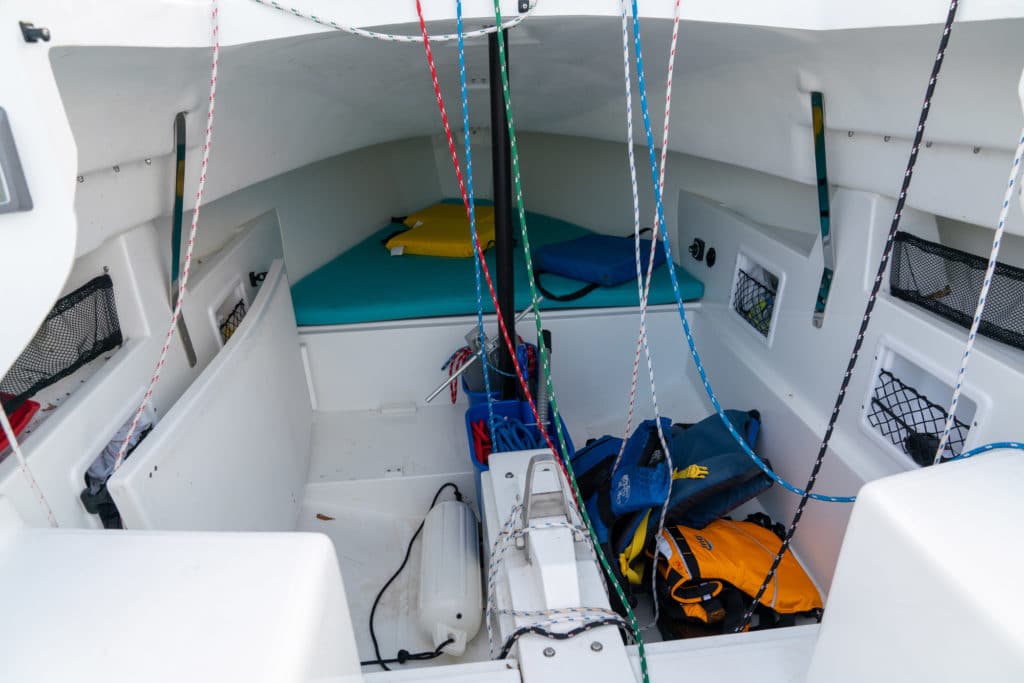
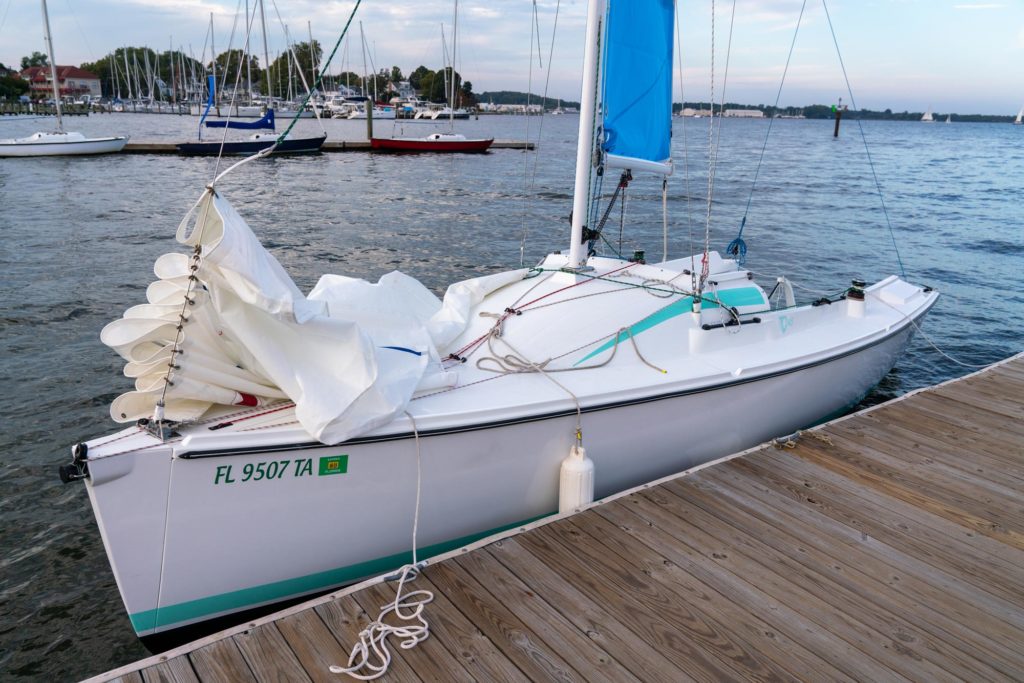
What he came up with is a delightful little boat that does all that and more. Longtime aficionados of the Carl Alberg-designed Ensign will recognize several features from that classic daysailer (the sailor who commissioned the 245 had a soft spot for Ensigns). The long and spacious cockpit, the tiller steering and the handy cuddy cabin are all perfect. What separates the designs is the Tartan’s lifting keel, which makes it versatile and trailerable.
If the J/9’s focus is on simple sailing, the Tartan’s aim is to give students the ability to tweak sails and rig to their hearts’ content in order to learn big-boat handling and racing skills. Numerous control lines are led into the cockpit from the base of the mast, and aft, there is a beefy backstay adjuster.
The boat that the judges sailed in Annapolis was a demo boat for a local sailing school, and was stripped out inside, except for a cushion for the V-berth. But the owner’s plans included towing the boat back to his home in Florida, where he’s contemplating loading aboard a port-a-potty, cooler and stove, and possibly sailing it across to the Bahamas. Outfitted as such, it would be a sporty little vessel for exploring shallow-water venues between the cays.
With two boats that so closely hit the bullseyes described in their design briefs, there was one boat left to assess, and in the end, the Beneteau First 27 turned in a performance that insured it would sail away with the pocket-cruiser hardware.
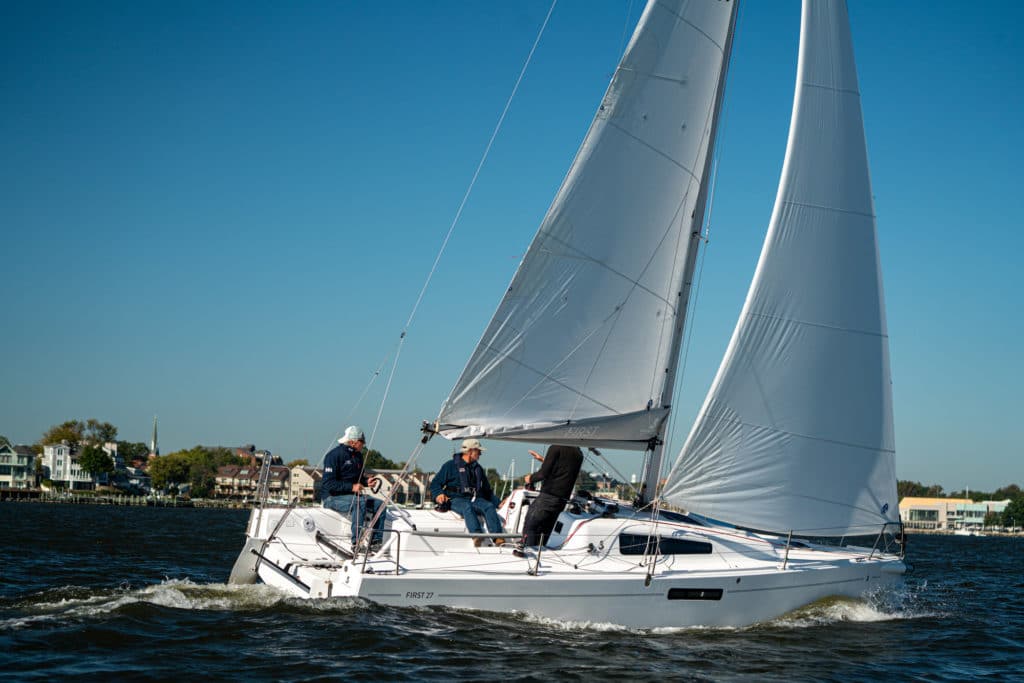
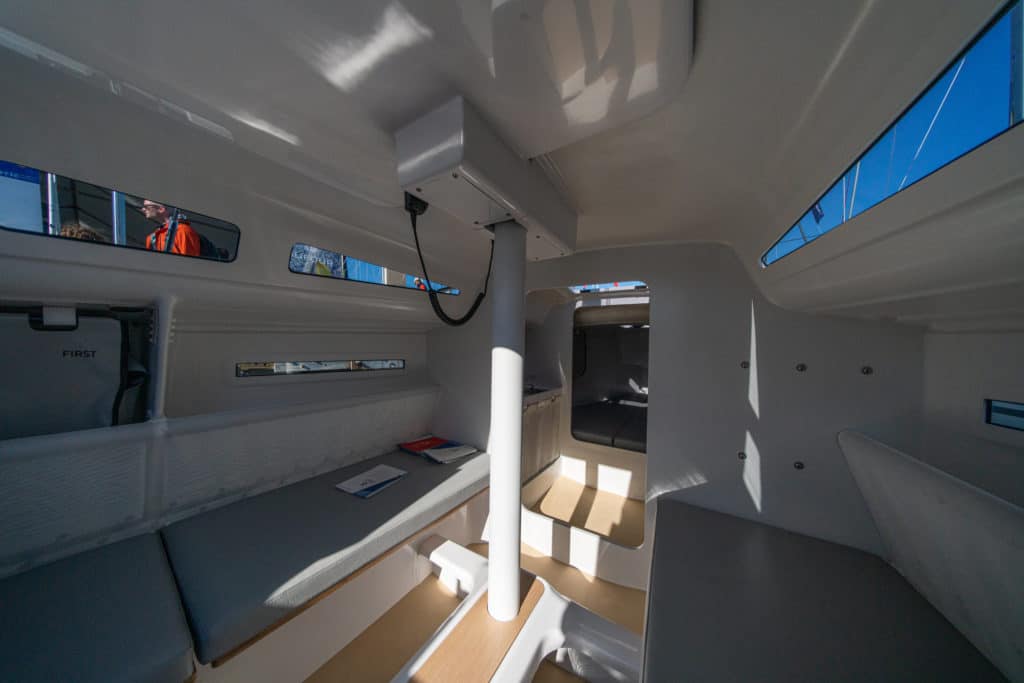
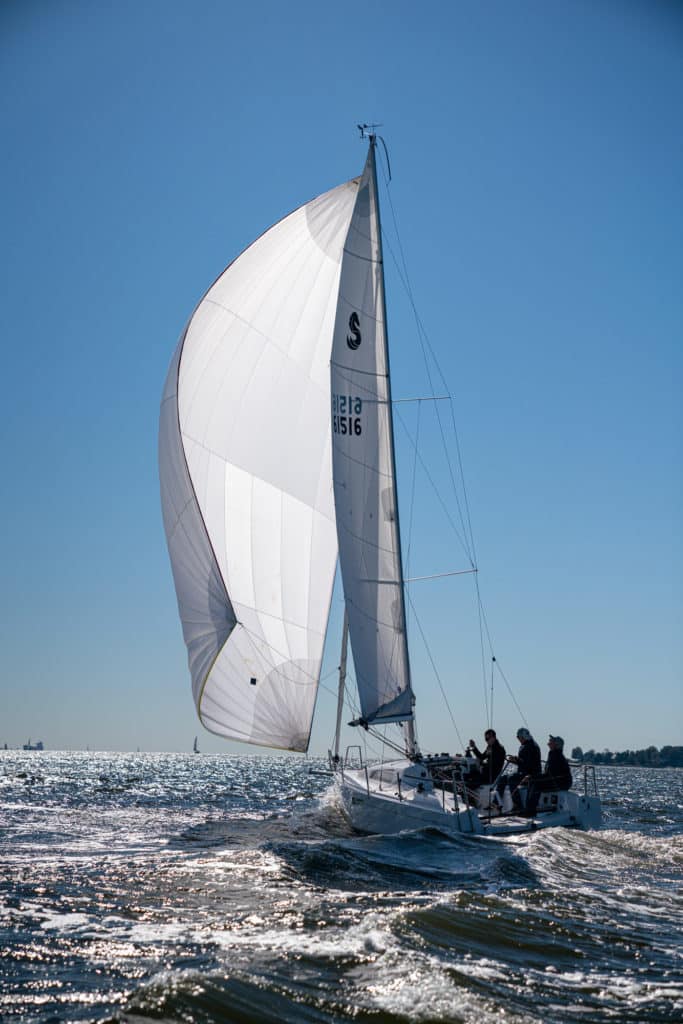
Built in Slovenia and, before undergoing a branding and systems revamping by Beneteau, this sharp, tidy “sport cruiser” was known as the Seascape 27. By any name, it delivers thrilling performance in a compact, well-reasoned package.
While the Seascape 27 was originally conceived as a major player in the ever-expanding world of doublehanded offshore racing—CW’s sister publication, Sailing World, tested and rewarded that boat—the cruisier version was reintroduced this year with several tweaks and the new moniker: First 27. And as a racer/cruiser, it boasts all the amenities necessary for weekend and coastal voyaging: a serviceable head, galley and berths, and a Yanmar diesel. In other words, a couple could easily liveaboard, rather than camp, for short periods of time, but they could also expect to be serious podium contenders should those outings involve a regatta.
In the end, it was the little things that swayed the judges. “The fit-and-finish for the price point is at a different level,” judge Gerry Douglas said. “The equipment level was higher.”








